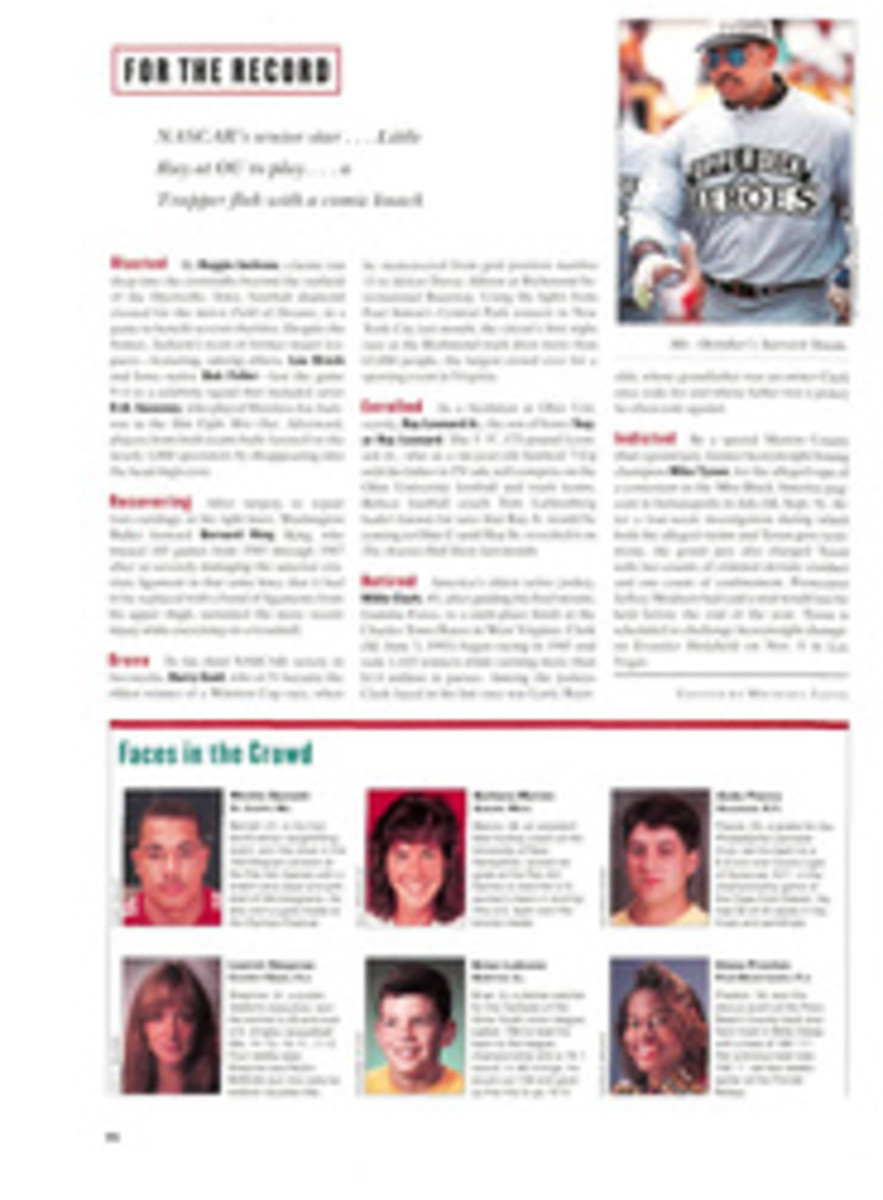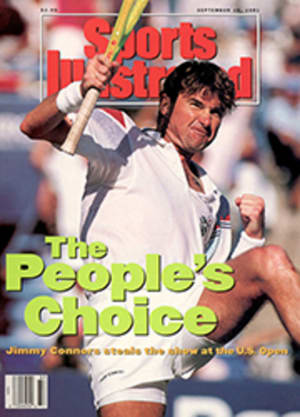
Unexpected Dividends in New York Harbor
There's a lot of fishy business going on around the United Nations world headquarters in Manhattan, but it has nothing to do with international crises. Close by the UN in the East River is an uninviting pile of rocks that is called, as the large sign proclaims, U Thant Island, after the late secretary-general from Burma. What's fishy about that? Well, U Thant Island also happens to be one of the hot spots for striped bass and bluefish in the waters surrounding New York City.
Fishing hot spot? New York City? If you believe what you read in the tabloids, all you can find in those waters are orange rinds, cars that have been sunk in insurance-fraud schemes and victims of mob hits. Now you can add to that list inshore game fish. And not just strays. The fishing is so hot in the shadow of the Statue of Liberty and the Brooklyn Bridge that Joseph Shastay Jr. has become the first licensed charter-boat captain in my memory to take anglers out in New York Harbor on a regular basis.
Trim and sporting an appropriately nautical beard, Shastay specializes in striped bass and bluefish. Stripers are present in the area all year round, while blues, up to 16 pounds, abound from May to November. "In the spring, there are more fish in the harbor than out in the Atlantic," Shastay says. "I know because I used to go out to the ocean. The only spot where you really don't catch fish in the harbor is in the deep channels, but sometimes you can even catch them there."
Shastay's boat is a 19-foot center-console Mako Classic, owned by the captain and two partners. "You don't need a high-seas boat for the harbor," he says. "There's never been a day when it couldn't go out or come in." The 19-footer also allows Shastay to maneuver tight into submerged pilings and rocks and the currents swirling around them, where big fish hang out, waiting for a meal of baitfish to come tumbling by.
Because of the boat's size, Shastay limits the number of anglers to three at most (two if Steve Sautner, one of his partners, goes along as mate). He charges $225 for a six- to seven-hour charter—whether for one, two or three anglers—or $300 for eight to nine hours. He berths the Mako near his home in Jersey City, just across the Hudson River from Manhattan.
Shastay, 33, began fishing New York Harbor at six, when he caught eels off the Jersey City piers with his father. Later, he bought a rubber raft and ducked the towering passenger liners and freighters as he fished for stripers and blues. He also competed in freshwater bass tournaments. Some of the techniques he learned angling for largemouths—such as jigging in drowned timber—have proved effective in the harbor. But unlike the close-mouthed competitors on the fish-for-cash bass tournament circuit, Shastay finds that most harbor anglers—of whom there are maybe 40 regulars—readily talk about what's hitting and where. "They tell all," he says. "They want others to share in it."
After high school, Shastay worked as a trucker and then went to Jersey City State College at night, majoring in biology. In his spare hours, he continued to explore and fish the harbor. "As long as I've known him, and that's 15 years, he has wanted to be a harbor charter captain," says his wife, Joanne. It took Shastay eight years to get his B.S. degree. After receiving it, in 1989, he went to work on a research trawler for Normandeau Associates, a Massachusetts-based environmental firm that has a contract with the New York State Power Authority to trawl, tag and release striped bass and tomcod in the Hudson River and New York Harbor.
Aside from putting fliers in a couple of tackle shops, Shastay has done no advertising, but word of mouth on his charter service spread quickly after he took his first client on a four-hour trip last March. Shastay had his charter use plugs, which are generally considered useless in winter because the cold-blooded fish are lethargic. The astonished angler landed an 11-pound striper and immediately booked another trip.
Shastay, who averages four charters a week, still works for Normandeau. "One reason I work for the company is that I thought I would find out where it's happening," he says. "I do get some information about water temperature and such but not as much about specific fish as I expected. In the spring I discovered when the stripers and blues were eating blue-back herring, alewives and anchovies."
If Shastay is not overly impressed with the information he gleans from his scientific trips, it proves invaluable to his clients. "Overall, on nine out of 10 trips, we get at least 15 fish," Shastay says. "On the bad trip, it's three to six fish. Most clients release all their fish, except to keep a few 'cocktail' blues [two- to three-pounders] for the table.
"Then there's still a concern about pollution in the harbor, even though the water is much cleaner and clearer than it used to be, because of the Clean Water act. Also, a lot of industry has moved out of the area since cheap waterfront property is being transformed into high-priced residential areas. Visibility in the East River can get to 10 to 12 feet, and it's nice to see a bluefish coming up to hit a jig."
The trip my son, Alex, and I took with Shastay and Sautner earlier this summer turned out to be one of the bad ones. I wish it had been otherwise, but never mind; I had fished the harbor a number of times in the past and knew it was loaded with fish. Conditions could not have been much worse on the day I had booked. A bright sun almost guaranteed the fish would be down deep, and a ceaseless 20-mph wind going against the strong running tide—plus heavy ship traffic—caused big waves and swells. To top it off, I had asked Shastay to pick us up at Manhattan's 79th Street Boat Basin. Never again. The marina where Aristotle Onassis once berthed his yacht had fallen on hard times. The piles of garbage in the park and the homeless's camping in the rotunda in front of the marina when I was there made the most depressing slum in Calcutta look like a suite at the Ritz.
Shastay had barely cut his engines before we leapt on board and urged him to head back out into the river. The Mako roared down the Hudson, past the aircraft carrier Intrepid, which is now a museum, past the steel-and-glass-enclosed acreage of the Jacob K. Javits Convention Center, to the World Trade Center twin towers, then around the southern tip of Manhattan, up past Wall Street and the Lower East Side and up the East River.
Shastay cut the engine 100 yards short of U Thant Island. A raucous batch of black cormorants and some gulls were sitting on the crossbar and supports of the island's sign. As the wind blew the boat toward the rocky shoreline, we dropped two- to three-ounce white bucktail jigs onto the steeply rising underwater ridge leading to the island. We lifted the jigs up a couple of feet before repeating the action over and over. My arm began to feel like a walking beam on an oil-field pump.
But the fish were there. We all had hits during about a dozen drifts, but no one, including Shastay, landed a fish. I lost five—four that got off after striking on the down drop, a tricky time to set a hook, especially from a boat in rising and falling big waves. The fifth fish, doubtless a big blue, bent my rod over before making off with the jig by biting through my 14-pound-test line. I had not used a wire leader because I thought it would interfere with my sense of touch.
We went downriver, bouncing past a blur of Manhattan skyscrapers on our right, and a jumble of warehouses and factories and a Soviet freighter on the Queens-Brooklyn shore. Shastay stopped about 30 feet off a waterfront restaurant near the Williamsburg Bridge on the Brooklyn side, and we cast in around the rocks and pilings of a couple of eroded piers. A large party was in progress on the restaurant's outdoor terrace, with men in dinner jackets and women in cocktail dresses. But no one gave us a second look. The people at the party were obviously New Yorkers who would not lift an eyebrow if Cleopatra's gilded barge sailed by. We went completely unnoticed, save by a 16-inch striper that Shastay caught and released.
Then he headed the Mako for blues on the flats, which rise up in the harbor off the Bay Ridge section of Brooklyn. Four boats were on the flats when we arrived. One boat was trolling, the others casting. We cast. This time I had a wire leader. I immediately had a hit. Gone. The blue had cleanly bitten off the tail end of the soft white plastic grub I was using. Shastay boated a cocktail blue. Sautner gave me a chromed diamond jig, and I had another hit. Gone. Alex had a hit. Gone. Suddenly Shastay gunned the engine, and all the boats began racing toward birds excitedly diving into the water a quarter of a mile away. A school of cocktail blues was working, some coming clear out of the water as they chased the baitfish. Shastay quickly boated a blue, and so did Sautner. Then the school sounded. I got nothing.
Back we went to U Thant Island for several more drifts. Zilch. It was time to return to the 79th Street Boat Basin. "As I told you, days like this happen," Shastay said. "Not often, but they happen." He offered me the blues, but I forgot to take them when I got off the boat.
I plan to go again. The blues will be around for a while yet, and there are reports of weakfish and bonito, or false albacore. At night in the fall, there can be sensational fly-fishing, casting streamers for school stripers in the lights and shadows of Ellis Island. The rocks around the Statue of Liberty are also a hot spot for stripers. In the middle of winter, Shastay fishes for stripers in the heated water discharges from power plants. No matter the time of year, he never quits. Why should he—the views are never bad. For a booking, call him at 201-792-9743.
PHOTO
GEORGE TIEDEMANN
Out beyond the downtown skyline, Sautner admires the bluefish Shastay has landed.

